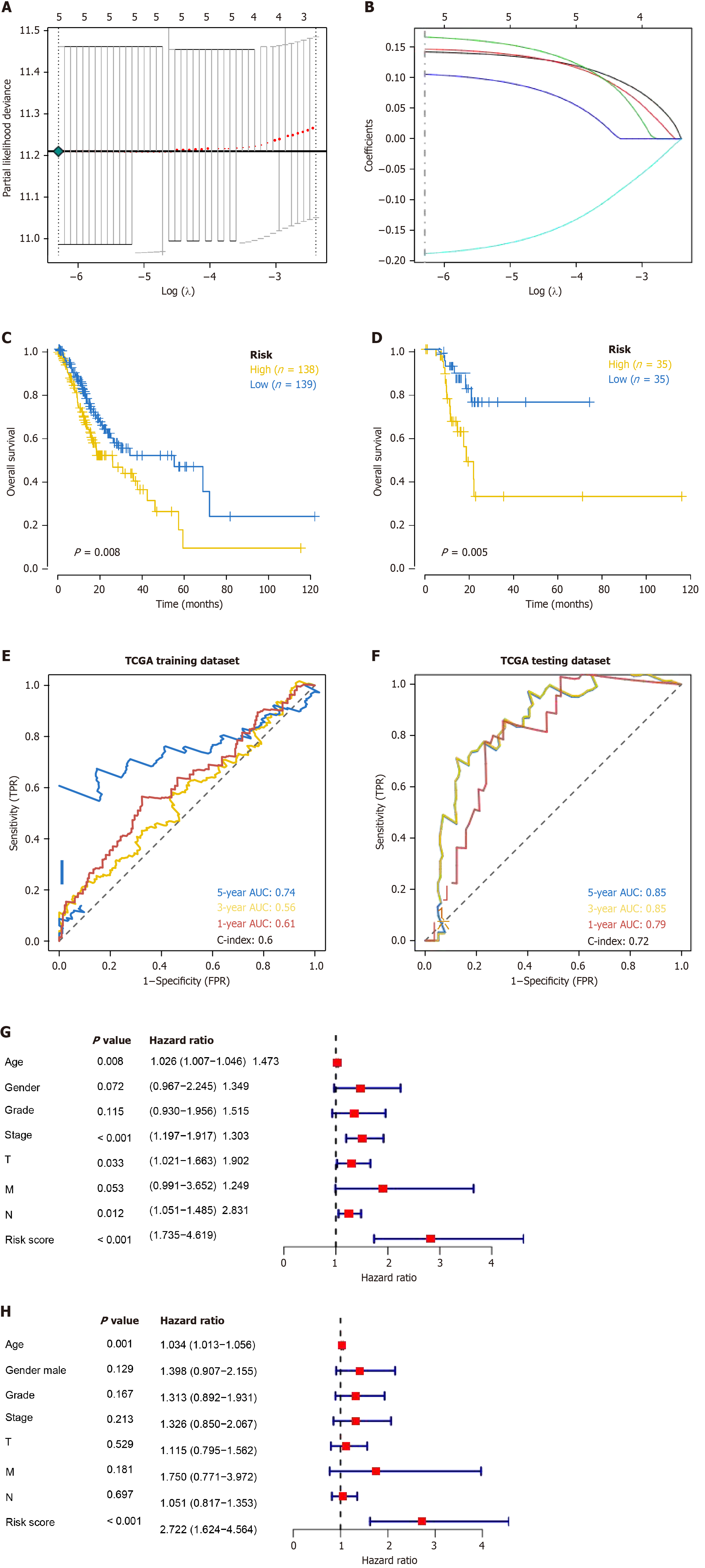Copyright
©The Author(s) 2024.
World J Gastrointest Oncol. Jul 15, 2024; 16(7): 3097-3117
Published online Jul 15, 2024. doi: 10.4251/wjgo.v16.i7.3097
Published online Jul 15, 2024. doi: 10.4251/wjgo.v16.i7.3097
Figure 3 Least absolute shrinkage and selection operator Cox regression analysis for the screening of prognostic genes and con
- Citation: Meng XY, Yang D, Zhang B, Zhang T, Zheng ZC, Zhao Y. Glycolysis-related five-gene signature correlates with prognosis and immune infiltration in gastric cancer. World J Gastrointest Oncol 2024; 16(7): 3097-3117
- URL: https://www.wjgnet.com/1948-5204/full/v16/i7/3097.htm
- DOI: https://dx.doi.org/10.4251/wjgo.v16.i7.3097









